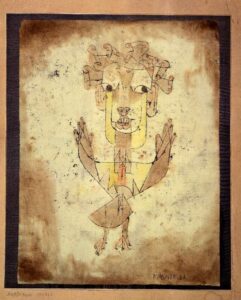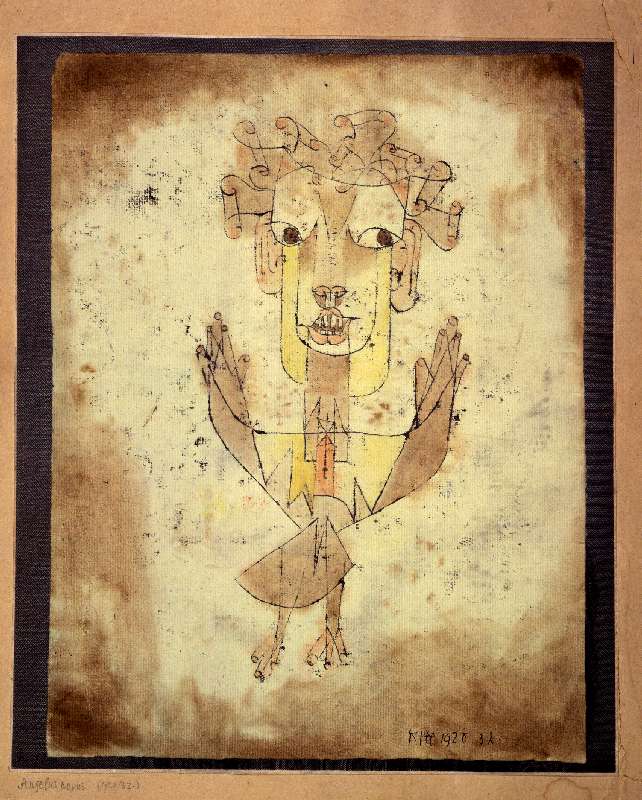The end of the world has been prophesied many times in the past centuries, but the world is still here. Thus it is appropriate that the subtitle of this book is The Apocalyptic Imagination. It is the lot of historians to read and write about absolute bilge-water, because that is what most of humanity has believed, and continues to believe.
In this fascinating and landmark study, John Jeffries Martin (professor in the Department of History at Duke University) gives us a fresh look at the notions of the Last Judgment in Europe. He spans the time period from the late 1400s to the early 1700s. Even though the death of Lt. Gen. William Hargrave in 1750 falls just outside the remit of his study, I can’t help thinking about his funerary monument in Westminster Abbey. It shows him struggling out of a collapsing pyramid tomb at the Last Judgment, as Time breaks Death’s spear. Described as ‘deliriously rococo,’ this monument by the French sculptor Francois Roubiliac really expresses better than anything else the evolution in thinking about the Last Judgment – in previous centuries, the mere idea of escaping death at the very end, preordained by God, would have been considered blasphemy of the highest order. But the rise of reason in the 18th century made even that seem within the grasp of humanity (or, more precisely, an Englishman; after all, God was born in England).
The author unfortunately does not mention Olivier Messiaen’s 1941 Quartet for the End of Time, whose title evokes the Apocalypse. Since the author does extend his discussion to include the World War II era (in the Epilogue), this seems like a notable miss as the entire musical expression of the apocalypse in the modern world is ignored. He does, however, highlight Paul Klee’s painting The angel of history (1920) in the Introduction to the book. It is emblematic of the author’s purpose: to understand the apocalyptic imagination of earlier times, he proposes a framework of “Providential modernity.” From this “capacious perspective, one can excavate the way in which hopes for a Beautiful Ending underlay the varied intellectual, political, and even economic enterprises of the period…Modernity was, in the end, a providential project.” This is heady stuff, as it directly confronts much of historical writing that ignores this very providential project. Of course, history is a multi-faceted exploration, but Martin’s convincing argument is that history as we usually learn it ignores this providential project that underpinned a multitude of actions which only come into focus when we look through the lens of the Apocalypse.
A prime example of this is Columbus, “who inscribed his voyage to the Indies within a larger spiritual vision that animated the Spanish monarchy in just these years. A Christian victory over the Muslims in Jerusalem would signal the Last Days, the Second Coming, the Eternal Peace.” The route to such a victory was the gold Columbus expected to find. He assured Ferdinand and Isabella that this wealth would enable them to mount a crusade against the Muslims occupying Jerusalem. In essence, Martin writes, Columbus believed the gold he would bring back to Spain would hasten the End of Time! In all the accounts of Columbus’ discovery of the New World, how many times have you read about this motivation for the voyage? Likely none.
Martin delves into the sources Columbus used to spark his intent on voyaging west across the Atlantic Ocean. A key text was written in the 1480s by the French cardinal Pierre d’Ailly. The first treatise by d’Ailly states that “between the tip of Spain and the beginning of India, the sea is small and navigable in a few days.” Martin notes that scholars have long given attention to this treatise, but have ignored the second one in d’Ailly’s book. That one dealt with astrology; Columbus was so intrigued by it he made annotations in his copy. “d’Ailly’s astrology was no less valuable to Columbus than was his cosmography.” This all came together because “When combined with scripture in which the arc of sacred history from the Creation to the Last Judgment could be discerned, astrology took on particular value, making it possible to predict when history itself would end.”
This is no mere conjecture on the part of the author. Columbus calculated the age of the world to be 6,845 years, with just under 5,344 years having passed from the Creation to the birth of Christ. Since then 1,501 years had passed, so it was clear the time remaining was short, as St Augustine wrote the world would end after the sixth millennium. Columbus himself wrote “According to this calculation only one hundred and fifty-five years are lacking for the completion of the seven thousand years which would be the end of the world.” The gulf between reality (about 4.5 billion years for the Earth’s age) and religion is stark. Convinced God had chosen him for a prophetic role, he was in the grip of an “apocalyptic dream,” but the “the vision proved tragic. Columbus never found paradise. To the contrary he had discovered an imperfect world. Then, in the matter of a decade, he transformed it into a hell.” The Spanish began capturing natives in Cuba to be sold as slaves in 1495.
One man who tried to end enslavement was Bartolome de Las Casas. “In 1520 he won royal support for his proposal to establish a model and humane community for the evangelization of natives. This community failed.” Martin leaves us in the dark about why it failed; few will find the French-language source he offers as much help.
The Ottomans were also swayed by apocalyptic thoughts that, perhaps surprisingly, include Jesus. A geomancer named Haydar became one of the most powerful figures at the court of Süleyman the Great in the mid-sixteenth century. “All signs,” Haydar wrote, “show that this is the millennial age to precede immediately the appearance of the Mahdi and descent of Jesus.” Martin tells us that “Ottoman authorities occasionally cracked down on apocalyptic visions that put Jesus rather than Mohammed at the center of the divine drama, but in general the vision of Süleyman as the Last World Emperor aligned with popular hopes for the End of History.” The key to much of this nonsense is not that the populace in both Europe and the Ottoman Empire feared the end, but that they actively welcomed it! It’s akin to hoping for another Trump presidency to end American democracy and bring about the collapse of the Western world. Mass insanity was not confined to the past.
It was the Reformation launched by Martin Luther in 1517 that proved to be “an accelerant, intensifying the hold of visions of the End Times over so many…Many Christians saw Luther as fulfilling an apocalyptic and prophetic role,” especially as he identified the Pope as the Antichrist. For a long time “many had preached that the rule of the Antichrist would mark the Last Days.” Martin reveals for us just how this played out. “Michael Stifel, who would publish a celebrated calculation of the End of History, identified Luther as the angel in the Book of Revelation.” The innovative physician Paracelsus, a contemporary of Luther, believed the restoration of the wisdom of Adam was a precondition for the Last Judgment, and that this would be facilitated by the ancient prophet Elias. “Many had called Luther ‘Elias’,” Martin writes. Thus it is not surprising that the entire sixteenth century became “roiled by apocalyptic expectations,” such as a collection of prophetic poems by Melchoir Ambach. Published in 1545, it has the ominous title Concerning the End of the World.
As a new century dawned in 1600/01, the mood shifted to one of hope. In 1619, Nagel predicted “a new golden age that would dawn under the conjunction of Saturn and Jupiter in 1623 and last for 42 years.” More than 200 such works were printed between 1600 and 1630; when Francis Bacon wrote about signs that the End of History was approaching, his “apocalyptic vision had little in common with the traditional forms of millenarianism or with anticipations of a Second Coming…He saw time not only as providential leading to the Apocalypse but also as circular, as restorative, taking humanity back to its pristine beginnings, to Adam.” While many have seen Bacon and the origin of modern science as one and the same, Martin disabuses us of that notion. “Rather we are in a far more curious world in which linear, circular and providential time coexisted and informed one another – in a world, that is, marked by a plurality of temporalities.”
Rethinking the history we ‘know’ is perhaps one of the hardest of all intellectual endeavours. Martin has laid out here, in this essential book, the roadmap for doing just that. It remains to be seen if other scholars follow and expand on it.
[There is a typo on page 15: “a threat to” should be “threat to”]
A Beautiful Ending: The Apocalyptic Imagination and the Making of the Modern World is by Yale University Press. It lists for $35.

